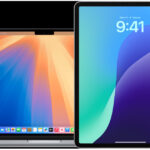A photo, in the context of digital imaging, often refers to more than just the final image you see. It encompasses various stages and formats, especially within photo editing software like Affinity Photo. Understanding these different meanings is crucial for efficient and flexible editing workflows.
One fundamental concept is the distinction between a photo’s original file and its edited version. The original file, often in RAW format, remains untouched, preserving all the initial data captured by the camera. This allows for non-destructive editing, meaning adjustments can be made without permanently altering the original data.
Within Affinity Photo, developing a RAW file in the Photo Persona creates a pixel layer. This pixel layer represents the edited version of the photo, containing all the adjustments made. While you can always reopen the original RAW file to start anew, this creates a separate document, leaving the previous edits in their own file.
Affinity Photo offers two crucial options for handling developed photos: “Linked” and “Embedded.” These options determine how the edited photo relates to its original RAW file.
Choosing the “Linked” option creates a smaller file size, as the edited photo maintains a link to the original RAW file, rather than incorporating all its data. However, reopening a linked file requires Affinity Photo to reread the original RAW data and reapply all adjustments, which can be time-consuming. This approach relies on the original RAW file remaining in its original location.
Alternatively, the “Embedded” option incorporates the RAW data directly into the Affinity Photo file. While resulting in a larger file size, it enables faster loading times since the software doesn’t need to access an external file. This option eliminates the dependency on the original RAW file’s location.
The choice between “Linked” and “Embedded” depends on individual workflow preferences and storage considerations. If storage space is limited and original RAW files are meticulously organized, “Linked” might be preferable. If faster loading times are prioritized and file location stability is uncertain, “Embedded” offers a more robust solution.
Ultimately, understanding these different meanings of “photo” empowers photographers to leverage the full potential of photo editing software like Affinity Photo. By choosing the right workflow and understanding how adjustments are applied, photographers can ensure flexibility and efficiency in their editing process.

